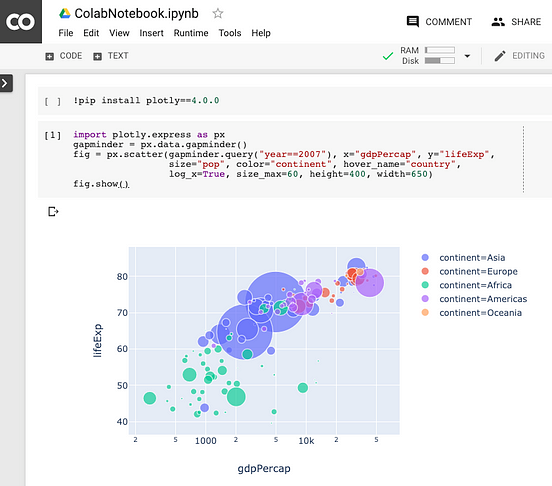
#PLOTLY NOT SHOWING IN JUPYTERLAB INSTALL#
$ jupyter labextension install jupyterlab-plotly You can run the following commands in a terminal to fully remove plotly before installing again: It's often worthwhile to uninstall with both methods before following the Getting Started instructions from scratch with one or the other.

It's very important that you not have a file named plotly.py in the same directory as the Python script you're running, and this includes not naming the script itself plotly.py, otherwise importing plotly can fail with mysterious error messages.īeyond this, most import problems or AttributeErrors can be traced back to having multiple versions of plotly installed, for example once with conda and once with pip.

Read on for details about troubleshooting plotly in these environments. In general you must also have the correct version of the underlying Plotly.js rendering engine installed, and the way to do that depends on the environment in which you are rendering figures: Dash, Jupyter Lab or Classic Notebook, VSCode etc. This documentation (under ) is compatible with plotly version 4.x but not with version 3.x, for which the documentation is available under.

In order to follow the examples in this documentation site, you should have the latest version of plotly installed (5.x), as detailed in the Getting Started guide.


 0 kommentar(er)
0 kommentar(er)
